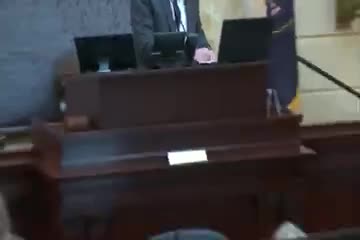Senator Winterton advocates for water conservation in Great Salt Lake region legislation
February 01, 2024 | 2024 Utah Legislature, Utah Legislature, Utah Legislative Branch, Utah

This article was created by AI summarizing key points discussed. AI makes mistakes, so for full details and context, please refer to the video of the full meeting. Please report any errors so we can fix them. Report an error »

In a recent session of the Utah General Legislative Assembly, lawmakers took significant steps toward water conservation and infrastructure management, addressing pressing community needs.
One of the key discussions centered around a bill introduced by Senator Winterton aimed at promoting water-efficient landscaping in government construction projects located in the Great Salt Lake Basin. The proposed legislation mandates that nonfunctional turf—areas not intended for foot traffic—be limited to 20% of new landscaping. This initiative is designed to conserve water resources and encourage municipalities to prioritize water-saving measures, rather than placing the burden solely on agricultural producers. The bill has garnered support from various stakeholders, including the Utah Association of Counties and the Great Salt Lake Commissioner, and was approved by both the water task force and the legislative water development committee. Following a roll call vote, the bill successfully passed with 18 votes in favor and 9 against, moving forward to the next legislative stage.
Additionally, the assembly discussed House Bill 74, which addresses utility relocation cost-sharing amendments. Senator Harper highlighted the need for improved coordination between the Utah Department of Transportation (UDOT) and utility companies as certain functions transition from the Utah Transit Authority (UTA) to UDOT. The bill aims to clarify the responsibilities regarding the sharing of costs associated with utility relocations during capital development projects, ensuring that existing agreements between UTA and utility providers are honored. This measure is expected to streamline processes and reduce potential conflicts during infrastructure development.
These legislative actions reflect a commitment to addressing environmental concerns and enhancing infrastructure efficiency, ultimately benefiting Utah residents by promoting sustainable practices and improving coordination among public agencies. As these bills progress, they signal a proactive approach to managing the state's resources and infrastructure challenges.
One of the key discussions centered around a bill introduced by Senator Winterton aimed at promoting water-efficient landscaping in government construction projects located in the Great Salt Lake Basin. The proposed legislation mandates that nonfunctional turf—areas not intended for foot traffic—be limited to 20% of new landscaping. This initiative is designed to conserve water resources and encourage municipalities to prioritize water-saving measures, rather than placing the burden solely on agricultural producers. The bill has garnered support from various stakeholders, including the Utah Association of Counties and the Great Salt Lake Commissioner, and was approved by both the water task force and the legislative water development committee. Following a roll call vote, the bill successfully passed with 18 votes in favor and 9 against, moving forward to the next legislative stage.
Additionally, the assembly discussed House Bill 74, which addresses utility relocation cost-sharing amendments. Senator Harper highlighted the need for improved coordination between the Utah Department of Transportation (UDOT) and utility companies as certain functions transition from the Utah Transit Authority (UTA) to UDOT. The bill aims to clarify the responsibilities regarding the sharing of costs associated with utility relocations during capital development projects, ensuring that existing agreements between UTA and utility providers are honored. This measure is expected to streamline processes and reduce potential conflicts during infrastructure development.
These legislative actions reflect a commitment to addressing environmental concerns and enhancing infrastructure efficiency, ultimately benefiting Utah residents by promoting sustainable practices and improving coordination among public agencies. As these bills progress, they signal a proactive approach to managing the state's resources and infrastructure challenges.
View full meeting
This article is based on a recent meeting—watch the full video and explore the complete transcript for deeper insights into the discussion.
View full meeting

